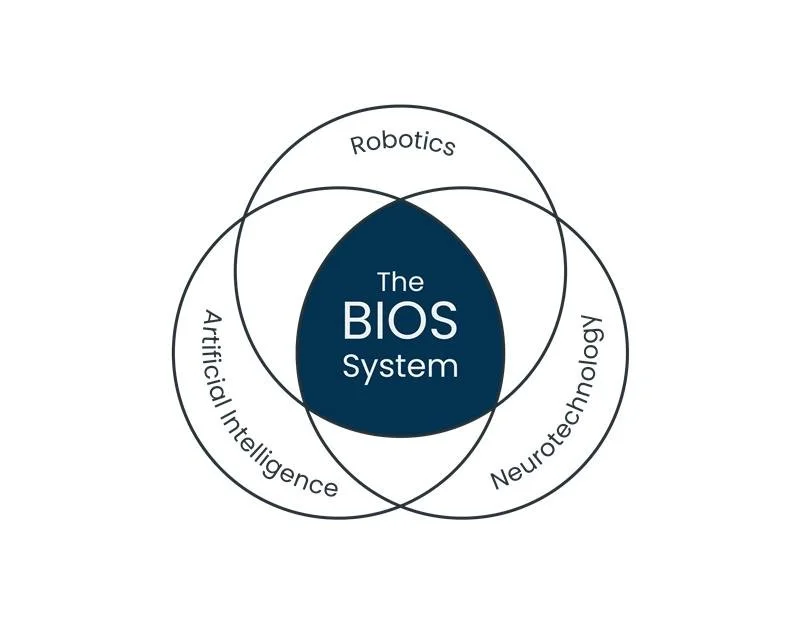Explore how BIOS Universal Neural Interface (UNI) technology is reshaping the way you interact with the world.
Move. Feel. Live.
Our Tech
FEATURED
TECHNOLOGY
The design of our Universal Neural Interface (UNI) draws on advances in neurotechnology, robotics, and artificial intelligence to create a USB port for the human body. Our interface allows fast, accurate, intuitive movement, and lifelike sensory feedback for the user.
THE BREAKDOWN
Our first application restores natural movement and sensation for people with limb loss. With direct two-way communication between the brain and the robotic, the user can both move the robotic as they would a natural limb and feel life-like sensations.
Neurotechnology
Tapping Into Your Natural Signals.
-
We use implanted electrodes to connect to your peripheral nervous system, the network that carries signals from your central nervous system to your limbs.
This allows our interface to pick up the natural messages your brain is already sending, so you can move your prosthetic as intuitively as your own limb and even feel life-like sensations through it.
-
We integrate with advanced robotic systems which mimics the dexterity and precision of a human limb. Through our interface, the limb’s sensors send information back to the nervous system, helping users move and feel more naturally.
Where Thought Becomes Motion.
Robotics
Artificial Intelligence /
Machine Learning
-
AI and machine learning algorithms decode complex neural signals and refine control over time. As the system learns, it delivers smoother movements and more personalized sensory feedback, adapting to each user’s unique needs.
Adapting to you.
THE RESULT
The implications of our technology are groundbreaking in a profound way. To interface, in a biologically natural way with any advanced technology, opens worlds of possibilities beyond which we can only barely imagine.
Our Interface in Action.
Press to Play





